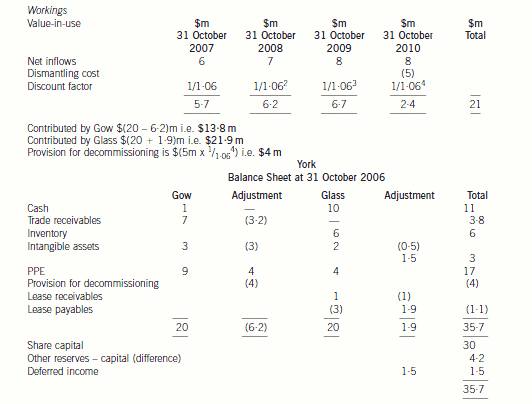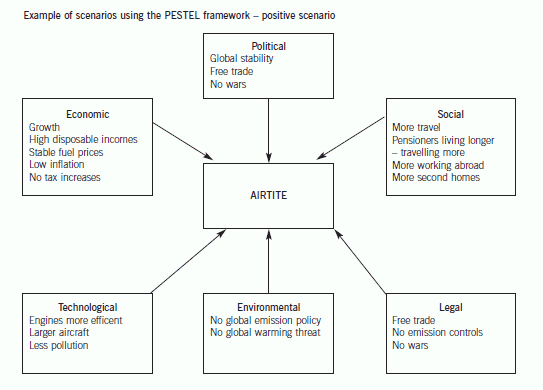台湾2020年ACCA国际会计师报名入口及报名流程~
发布时间:2020-01-09
各位“资深”ACCAer们,提醒一下大家,目前正处于2020年3月份ACCA考试的常规报名阶段,没有报名的同学请抓紧时间报名哦~ 什么?作为“资深”ACCAer的你竟然忘记了ACCA报名的流程是什么样的?那么接下来,51题库考试学习网将告诉大家关于ACCA考试报名流程的具体操作步骤,萌新建议收藏哦~
第一步:登录ACCA官方网站:https://www.accaglobal.com/africa/en.html,点击myACCA(在这里温馨提示大家,因为ACCA称之为国际注册会计师,因此报名的流程是全英文的)

第二步:输入你的ACCA账号和密码,点击SIGN in to Myacca

第三步:在左侧导航栏中找到“EXAM ENTRY”,点击进入

第四步:点击 Book your
exams now

第五步:点击 Add
an exam

第六步(这个步骤相对比较复杂,各位同学们注意哟!):分别选择地点、时间、报考科目




第七步:在下图红色画圈处点击方框处打钩,之后点击Proceed to Payment支付考试费用

最后一步:有VISA双币卡的同学可以用VISA卡支付,没有VISA卡的同学可以使用支付宝支付(Alipay)

“资深”ACCAer们看完上面的科目报名缴费流程,是不是回忆起来了呀?“新手”ACCAer们是否对报名缴费流程有了一定的了解呢?51题库考试学习网在这里想告诉大家:毕竟报考ACCA考试的费用不算一个小数目,请同学们报考时谨慎考虑,一旦报名的那一刻就一定要坚持下来,学习的路程注定是孤独的,要坚定自己的内心,持之以恒地学习下去,加油,同学们~
下面小编为大家准备了 ACCA考试 的相关考题,供大家学习参考。
(b) Prepare the balance sheet of York at 31 October 2006, using International Financial Reporting Standards,
discussing the nature of the accounting treatments selected, the adjustments made and the values placed
on the items in the balance sheet. (20 marks)

Gow’s net assets
IAS36 ‘Impairment of Assets’, sets out the events that might indicate that an asset is impaired. These circumstances include
external events such as the decline in the market value of an asset and internal events such as a reduction in the cash flows
to be generated from an asset or cash generating unit. The loss of the only customer of a cash generating unit (power station)
would be an indication of the possible impairment of the cash generating unit. Therefore, the power station will have to be
impairment tested.
The recoverable amount will have to be determined and compared to the value given to the asset on the setting up of the
joint venture. The recoverable amount is the higher of the cash generating unit’s fair value less costs to sell, and its value-inuse.
The fair value less costs to sell will be $15 million which is the offer for the purchase of the power station ($16 million)
less the costs to sell ($1 million). The value-in-use is the discounted value of the future cash flows expected to arise from the
cash generating unit. The future dismantling costs should be provided for as it has been agreed with the government that it
will be dismantled. The cost should be included in the future cash flows for the purpose of calculating value-in-use and
provided for in the financial statements and the cost added to the property, plant and equipment ($4 million ($5m/1·064)).
The value-in-use based on a discount rate of 6 per cent is $21 million (working). Therefore, the recoverable amount is
$21 million which is higher than the carrying value of the cash generating unit ($20 million) and, therefore, the value of the
cash generating unit is not impaired when compared to the present carrying value of $20 million (value before impairment
test).
Additionally IAS39, ‘Financial Instruments: recognition and measurement’, says that an entity must assess at each balance
sheet date whether a financial asset is impaired. In this case the receivable of $7 million is likely to be impaired as Race is
going into administration. The present value of the estimated future cash flows will be calculated. Normally cash receipts from
trade receivables will not be discounted but because the amounts are not likely to be received for a year then the anticipated
cash payment is 80% of ($5 million × 1/1·06), i.e. $3·8 million. Thus a provision for the impairment of the trade receivables
of $3·2 million should be made. The intangible asset of $3 million would be valueless as the contract has been terminated.
Glass’s Net Assets
The leased property continues to be accounted for as property, plant and equipment and the carrying amount will not be
adjusted. However, the remaining useful life of the property will be revised to reflect the shorter term. Thus the property will
be depreciated at $2 million per annum over the next two years. The change to the depreciation period is applied prospectively
not retrospectively. The lease liability must be assessed under IAS39 in order to determine whether it constitutes a
de-recognition of a financial liability. As the change is a modification of the lease and not an extinguishment, the lease liability
would not be derecognised. The lease liability will be adjusted for the one off payment of $1 million and re-measured to the
present value of the revised future cash flows. That is $0·6 million/1·07 + $0·6 million/(1·07 × 1·07) i.e. $1·1 million. The
adjustment to the lease liability would normally be recognised in profit or loss but in this case it will affect the net capital
contributed by Glass.
The termination cost of the contract cannot be treated as an intangible asset. It is similar to redundancy costs paid to terminate
a contract of employment. It represents compensation for the loss of future income for the agency. Therefore it must be
removed from the balance sheet of York. The recognition criteria for an intangible asset require that there should be probable
future economic benefits flowing to York and the cost can be measured reliably. The latter criterion is met but the first criterion
is not. The cost of gaining future customers is not linked to this compensation.
IAS18 ‘Revenue’ contains a concept of a ‘multiple element’ arrangement. This is a contract which contains two or more
elements which are in substance separate and are separately identifiable. In other words, the two elements can operate
independently from each other. In this case, the contract with the overseas company has two distinct elements. There is a
contract not to supply gas to any other customer in the country and there is a contract to sell gas at fair value to the overseas
company. The contract has not been fulfilled as yet and therefore the payment of $1·5 million should not be taken to profit
or loss in its entirety at the first opportunity. The non supply of gas to customers in that country occurs over the four year
period of the contract and therefore the payment should be recognised over that period. Therefore the amount should be
shown as deferred income and not as a deduction from intangible assets. The revenue on the sale of gas will be recognised
as normal according to IAS18.
There may be an issue over the value of the net assets being contributed. The net assets contributed by Glass amount to
$21·9 million whereas those contributed by Gow only total $13·8 million after taking into account any adjustments required
by IFRS. The joint venturers have equal shareholding in York but no formal written agreements, thus problems may arise ifGlass feels that the contributions to the joint venture are unequal.

(b) Anne is experiencing some tension due to the conflict between her duties and responsibilities as an employee of
Fillmore Pierce and as a qualified professional accountant.
Required:
(i) Compare and contrast her duties and responsibilities in the two roles of employee and professional
accountant. (6 marks)
(b) (i) Contrasting roles
Joint professional and organisational roles are common to most professionals (medical professionals, for example).
Although the roles are rarely in conflict, in most cases it is assumed that any professional’s primary duty is to the public
interest rather than the organisation.
Organisational role
As a member of the staff of Fillmore Pierce, Anne is a part of the hierarchy of an organisation and answerable to her
seniors. This means that under normal circumstances, she should comply with the requirements of her seniors. As an
employee, Anne is ultimately accountable to the principals of the organisation (the partners in an audit firm or the
shareholders in a company), and, she is subject to the cultural norms and reasonable expectations of work-group
membership. It is expected that her behaviour at work will conform. to the social and cultural norms of the organisation
and that she will be efficient and hard working in her job.
Professional role
As an accountant, Anne is obliged to maintain the high professional and ethical standards of her profession. If her
profession is underpinned by an ethical or professional code, she will need to comply with that in full. She needs to
manage herself and co-ordinate her activities so as to meet professional standards. In this, she needs to ensure that she
informs herself in current developments in her field and undertakes continuing professional development as required by
her professional accounting body. She is and will remain accountable to her professional body in terms of continued
registration and professional behaviour. In many cases, this accountability will be more important than an accountability
to a given employer as it is the membership of the professional body that validates Anne’s professional skills.
(b) Explain how the process of developing scenarios might help John better understand the macro-environmental
factors influencing Airtite’s future strategy. (8 marks)
(b) Carrying out a systematic PESTEL analysis is a key step in developing alternative scenarios about the future. Johnson and
Scholes define scenarios as ‘detailed and plausible views of how the business environment of an organisation might develop
in the future based on groupings of key environmental influences and drivers of change about which there is a high level of
uncertainty’. In developing scenarios it is necessary to isolate the key drivers of change, which have the potential to have a
significant impact on the company and are associated with high levels of uncertainty. Development of scenarios enables
managers to share assumptions about the future and the key variables shaping that future. This provides an opportunity for
real organisational learning. They are then in a position to monitor these key variables and amend strategies accordingly. It
is important to note that different stakeholder groups will have different expectations about the future and each may provide
a key input to the process of developing scenarios. By their very nature scenarios should not attempt to allocate probabilities
to the key factors and in so doing creating ‘spurious accuracy’ about those factors. A positive scenario is shown below and
should provide a shared insight into the external factors most likely to have a significant impact on Airtite‘s future strategy.
For most companies operating in global environments the ability to respond flexibly and quickly to macro-environmental
change would seem to be a key capability.
The scenario as illustrated below, clearly could have a major impact on the success or otherwise of Airtite’s strategy for the
future. The key drivers for change would seem to be the link between technology and global emissions, fuel prices and the
stability of the global political environment. Through creating a process which considers the drivers which will have most
impact on Airtite and which are subject to the greatest uncertainty, Airtite will have a greater chance of its strategy adaptingto changing circumstances.

声明:本文内容由互联网用户自发贡献自行上传,本网站不拥有所有权,未作人工编辑处理,也不承担相关法律责任。如果您发现有涉嫌版权的内容,欢迎发送邮件至:contact@51tk.com 进行举报,并提供相关证据,工作人员会在5个工作日内联系你,一经查实,本站将立刻删除涉嫌侵权内容。
- 2020-03-04
- 2020-01-10
- 2020-03-05
- 2020-01-10
- 2019-12-06
- 2020-05-09
- 2020-05-24
- 2020-03-13
- 2020-04-03
- 2020-01-10
- 2020-01-10
- 2020-09-04
- 2020-02-21
- 2020-01-09
- 2020-03-04
- 2020-01-10
- 2020-01-10
- 2020-01-09
- 2020-03-11
- 2020-01-08
- 2020-01-02
- 2020-03-07
- 2020-04-16
- 2020-03-05
- 2020-03-01
- 2020-03-04
- 2020-01-10
- 2020-01-10
- 2020-01-10
- 2019-01-05